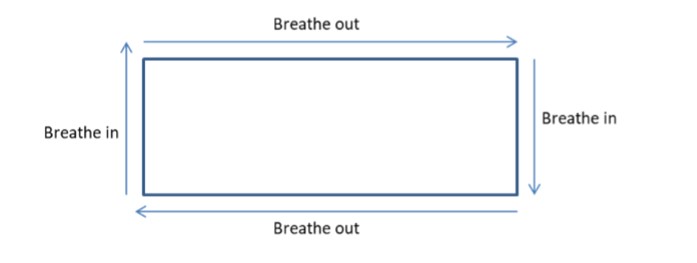Breathlessness and Long Covid
Breathlessness is a very common symptom in people with Long Covid.
Your lungs can become inflamed with your initial infection and the effort of breathing can increase.
You may be breathing shallower and more quickly than normal, however, it is important to try and stay calm.
As your lungs recover and time passes into the 12-week mark following infection, there can be other reasons for your
breathlessness to continue. These can be due to being deconditioned, a change in breathing pattern and/or linked to anxious thoughts.
When you are anxious this can also increase your heart rate and make your breathing rate increase further. We encourage breathing control to help manage your breathlessness. Practise at rest to begin with then use during activity.
Breathing control - something to help you relax
1. Get in a comfortable position.
2. Close your eyes and bring your attention to your breathing.
3. Notice areas of tension in your body and try to release this with each breath out.
4. Put a hand on your stomach and recognise how it rises and falls when you breathe in and out.
5. Breathe in and out through your nose (or mouth if you are unable to do this - but work towards trying to breathe through your nose in time).
6. Try to breathe in for the count of one, PAUSE and then out for count of two, working towards a longer breath out than in. This will slow your breathing rate down.
7. Notice areas of tension in your body and try to release this with each breath out.
8. Gradually try to make your breaths slower, regular, feeling your stomach rise and fall without effort in your shoulders and upper chest.
You could also try “rectangular breathing”. Look at a rectangle (e.g. window, screen, picture) and track your eyes along the edges, controlling your breathing as below:

Positions of ease
These positions may help reduce your breathlessness and effort of breathing. These are good positions to use to help you regain your breath when breathless and to practise your breathing control.
High side lying:
- Lie on your side
- Use multiple pillows under your head and shoulders
- Bend your knees a little.
Supported forward sitting:
- Sitting upright, lean forward on to a table
- Add as many pillows as required.
Forward sitting:
- Sit leaning forward
- Rest your forearms on your knees
- Relax your chest and shoulders.
Supported standing:
- Stand leaning forward and use a chair, bench or wall for support
- Relax your chest and shoulders.
Blow as you go
This is useful during activities that make you breathless e.g. lifting an object/making bed
- Breathe in before you make the effort.
- Breathe out whilst making the effort (e.g. as you lift the object).
- Always breathe out on the hardest part of the action.

